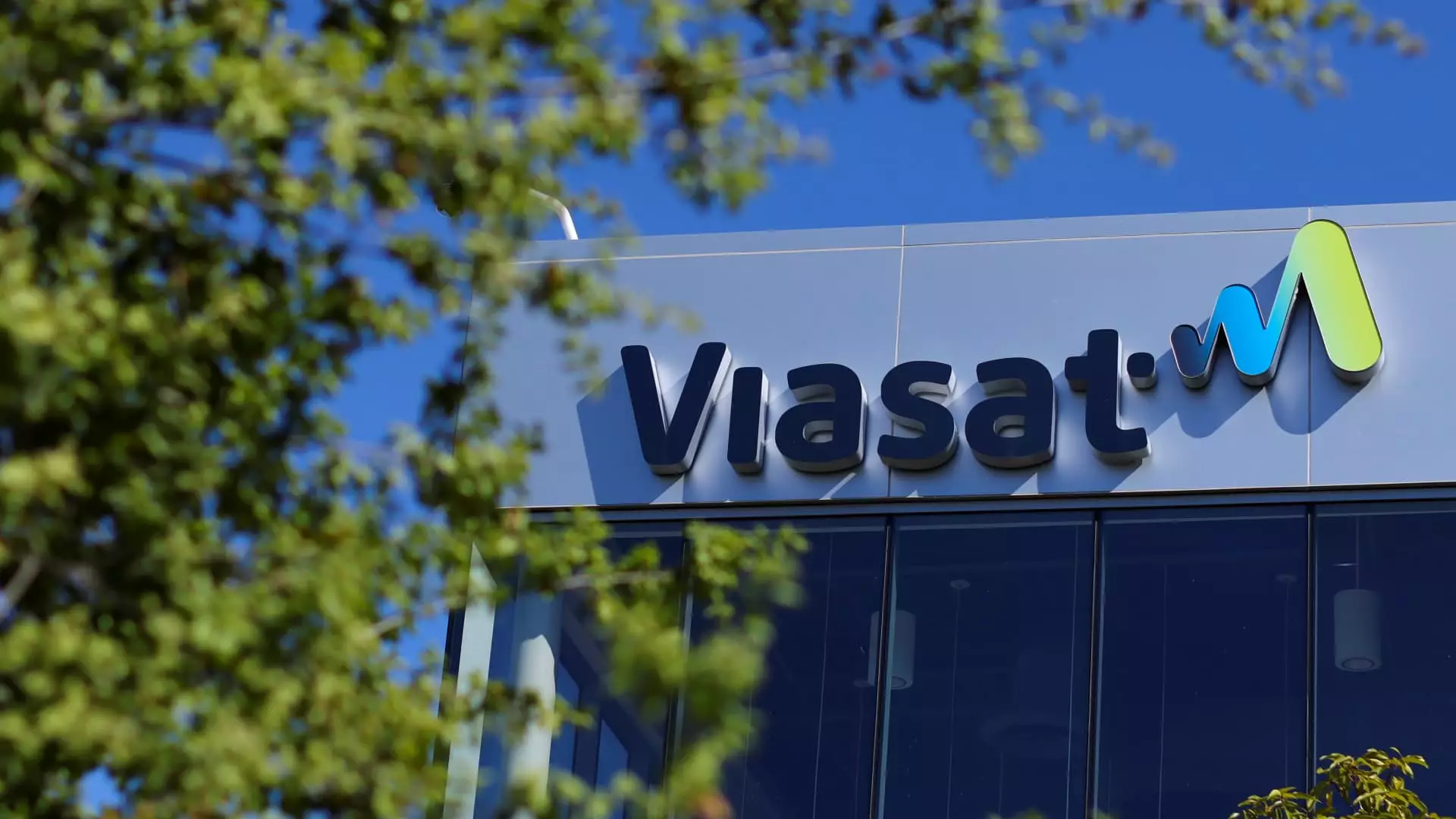Viasat has recently captured the attention of investors in a way that few anticipated. Following an analyst upgrade from Deutsche Bank, the stock surged over 40%, reflecting a growing sense of optimism. Analyst Edison Yu made headlines by shifting his recommendation from a “hold” to a “buy,” suggesting multiple avenues for Viasat to significantly enhance its equity value. In a volatile stock market environment, such a shift can feel like a breath of fresh air, yet it raises questions about long-term sustainability and market dynamics.
Yu’s optimistic predictions are based on the potential for Viasat to reduce its debt significantly through strategic asset sales. The analyst estimates that this process could unfold over the next year to year-and-a-half, suggesting that time is both an ally and a risk. While the immediate excitement is palpable, investors should remain vigilant over the nuances of timing and the ever-evolving competitive landscape dominated by companies like SpaceX’s Starlink.
Competitive Landscape: The Starlink Challenge
Despite the bullish sentiment from Deutsche Bank, one cannot ignore the elephant in the room: Starlink. This satellite internet service has aggressively expanded its reach under Elon Musk’s direction, striking partnerships with telecommunications giants in India and launching services in Southeast Asia. Analysts point to the inherent challenges that Starlink poses for Viasat. The latter may find itself squeezed in terms of market share and brand loyalty, particularly as Starlink becomes synonymous with fast and reliable internet provision in many emerging economies.
The rapid advancements and deployment strategies surrounding Starlink create an uneasy cloud over Viasat’s optimism. With satellite services becoming increasingly available worldwide, Viasat must not only compete on pricing but also on innovative service offerings that distinguish it from its rivals. It’s a high-stakes game where every miscalculation could have dire consequences for market positioning.
Investing in Innovation Over Complacency
This scenario calls for a radical shift in Viasat’s business model. Rather than merely responding to competitor moves, the company must innovate relentlessly. This could mean investing in advanced satellite technologies, improving service quality, or even branching into new markets that have yet to be tapped. Complacency in the face of challenges from Starlink or other companies will lead to stagnation—an outcome that no investor can afford to overlook.
Moreover, Viasat’s recent stock performance, showing an increase of nearly 30% year-to-date compared to a general market decline, sparks interest but should be seen as a temporary reprieve. The spotlight needs to stay on operational improvements and proactive measures that would safeguard its market position in the long run.
Final Thoughts: Risk vs. Reward
Viasat stands at a crossroads, with a potentially compelling risk/reward scenario unfolding. Yet, as the investments roll in and the market evaluates its trajectory, it’s crucial to maintain a skeptical, yet hopeful angle. Investors should weigh analyst predictions against the ground realities of competitive forces while keeping a close eye on Viasat’s commitment to innovation. The real measure of the company’s future success will not be the swift surge in stock price but its ability to navigate the challenges posed by robust competitors like Starlink in this high-risk sector. It remains an exhilarating ride, contingent on strategy and execution in equal measure.


Leave a Reply